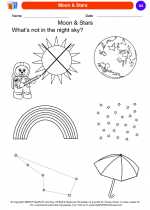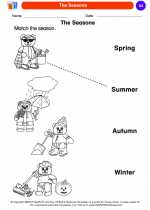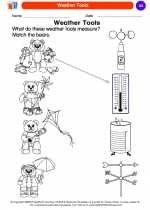What are Cells?
Cells are the basic building blocks of all living organisms. They are the smallest unit of life and perform various functions that keep living organisms alive.
Types of Cells
There are two main types of cells:
- Prokaryotic Cells: These are simple cells that do not have a nucleus or other membrane-bound organelles. They are found in bacteria and archaea.
- Eukaryotic Cells: These are complex cells that have a nucleus and other membrane-bound organelles. They are found in plants, animals, fungi, and protists.
Cell Structure
Eukaryotic cells have several key structures:
- Cell Membrane: A semi-permeable membrane that encloses the cell and regulates the passage of substances in and out of the cell.
- Nucleus: The control center of the cell that contains the genetic material (DNA).
- Cytoplasm: The gel-like substance inside the cell where organelles are suspended.
- Organelles: Structures within the cell that have specific functions, such as mitochondria (energy production), endoplasmic reticulum (protein synthesis), and Golgi apparatus (protein processing and packaging).
Cell Functions
Cells perform various functions to keep living organisms alive:
- Metabolism: Cells carry out chemical reactions to obtain and use energy.
- Growth and Reproduction: Cells grow and divide to produce new cells for growth and repair.
- Homeostasis: Cells maintain internal stability by regulating their internal environment.
- Response to Stimuli: Cells can respond to external stimuli, such as light or temperature changes.
Study Guide
To study cells effectively, consider these key points:
- Learn the differences between prokaryotic and eukaryotic cells.
- Understand the functions of the major organelles found in eukaryotic cells.
- Memorize the processes and functions that cells perform to keep living organisms alive.
- Practice identifying cell structures and their functions through diagrams and interactive resources.
- Explore cell biology through hands-on activities and experiments, such as observing cells under a microscope.
By understanding the structure and functions of cells, you can gain a deeper appreciation for the complexity of living organisms and the fundamental unit of life.
[Cells] Related Worksheets and Study Guides:
.◂Science Worksheets and Study Guides Kindergarten. Weather
Coloring Worksheet Calendar
Calendar  Coloring Worksheet
Coloring Worksheet Calendar
Calendar  Coloring Worksheet
Coloring Worksheet Day and Night
Day and Night  Coloring Worksheet
Coloring Worksheet Day and Night
Day and Night  Coloring Worksheet
Coloring Worksheet Exploring Weather
Exploring Weather  Coloring Worksheet
Coloring Worksheet Exploring Weather
Exploring Weather  Coloring Worksheet
Coloring Worksheet Look at the Clouds
Look at the Clouds  Coloring Worksheet
Coloring Worksheet Look at the Clouds
Look at the Clouds  Coloring Worksheet
Coloring Worksheet Moon & Stars
Moon & Stars  Coloring Worksheet
Coloring Worksheet Moon & Stars
Moon & Stars  Coloring Worksheet
Coloring Worksheet Natural Events
Natural Events  Coloring Worksheet
Coloring Worksheet Natural Events
Natural Events  Coloring Worksheet
Coloring Worksheet Sun and Shadows
Sun and Shadows  Coloring Worksheet
Coloring Worksheet Sun and Shadows
Sun and Shadows  Coloring Worksheet
Coloring Worksheet The Seasons
The Seasons  Coloring Worksheet
Coloring Worksheet The Seasons
The Seasons  Coloring Worksheet
Coloring Worksheet Things in the Sky
Things in the Sky  Coloring Worksheet
Coloring Worksheet Things in the Sky
Things in the Sky  Coloring Worksheet
Coloring Worksheet Weather Tools
Weather Tools  Coloring Worksheet
Coloring Worksheet Weather Tools
Weather Tools 

 Coloring Worksheet
Coloring Worksheet
 Coloring Worksheet
Coloring Worksheet
 Coloring Worksheet
Coloring Worksheet
 Coloring Worksheet
Coloring Worksheet
 Coloring Worksheet
Coloring Worksheet
 Coloring Worksheet
Coloring Worksheet
 Coloring Worksheet
Coloring Worksheet
 Coloring Worksheet
Coloring Worksheet
 Coloring Worksheet
Coloring Worksheet
 Coloring Worksheet
Coloring Worksheet
 Coloring Worksheet
Coloring Worksheet
 Coloring Worksheet
Coloring Worksheet
 Coloring Worksheet
Coloring Worksheet
 Coloring Worksheet
Coloring Worksheet
 Coloring Worksheet
Coloring Worksheet
 Coloring Worksheet
Coloring Worksheet
 Coloring Worksheet
Coloring Worksheet
 Coloring Worksheet
Coloring Worksheet
 Coloring Worksheet
Coloring Worksheet

The resources above cover the following skills:
EARTH AND SPACE SCIENCE (NGSS)
Earth’s Systems
Students who demonstrate understanding can:
Use and share observations of local weather conditions to describe patterns over time.